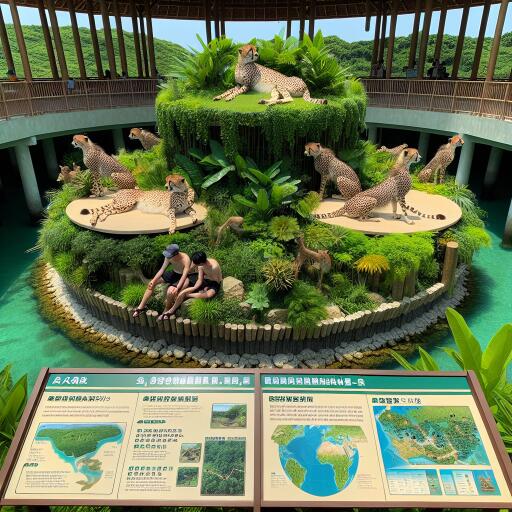
Reviving the Cheetah’s Legacy in the Eastern Cape through Innovative Conservation
In a remarkable tale of resilience and innovative conservation, the cheetah, an emblematic predator long vanished from its ancestral domains, has made a triumphant return to the Eastern Cape’s Mountain Zebra National Park. Neglected for over a century, this return is more than a conservation milestone; it embodies a sophisticated effort to replicate the natural migratory patterns disrupted by human influence, spotlighting the critical role of protected areas and migration corridors in contemporary wildlife conservation.
The situation today starkly contrasts the era when cheetahs roamed the vast Karoo planes, their freedom unhindered by the barriers and dangers posed by human encroachment. A shifting landscape marked by hunting, agricultural development, and urbanization has fragmented their natural habitats, transforming vast ecosystems into isolated patches of wilderness.
The challenges are profound, as described by experts within SANParks, South Africa’s custodian of national parks. Cheetah populations have dwindled to inhabit a mere fraction of their historical range globally, casting them as vulnerable characters in the narrative of biodiversity loss. However, South Africa emerges as a beacon of hope, showcasing a significant resurgence in wild cheetah numbers through concerted conservation efforts.
The Mountain Zebra National Park, in particular, stands as a testament to these efforts. In 2007, the park embarked on an ambitious reintroduction program, welcoming cheetahs back into its expanses. The endeavor, while successful, also provided crucial lessons in ecological balance. An initial lack of natural predators led to an unsustainable spike in cheetah populations, necessitating innovative management strategies, including the introduction of competing predators and the relocation of cheetahs to ensure genetic diversity and ecological harmony.
Key to these management efforts is the utilization of tracking technology, which has revolutionized the way conservationists monitor wildlife movement, behavior, and population dynamics. Tracking collars, for instance, have become invaluable tools in preempting human-wildlife conflict, managing ecological balances, and even enhancing tourist experiences.
Particularly noteworthy is the park’s contribution to the national and even international cheetah conservation efforts, playing a pivotal role in the Cheetah Range Expansion Project. By relocating cheetahs to other reserves and fostering genetic diversity, the park has helped bolster the species’ numbers and resilience across Africa.
Aside from its ecological achievements, the park has also capitalized on its burgeoning cheetah population to attract tourism. Cheetah tracking has emerged as a flagship activity, marrying conservation funding needs with the provision of unique wildlife experiences. This symbiotic relationship between conservation and tourism underscores the multifaceted benefits of innovative wildlife management practices.
Looking forward, the imperative to expand protected areas and establish migration corridors is undeniable. Isolation poses a significant threat to genetic diversity and ecosystem health, prompting conservationists to advocate for a more interconnected landscape. Visionary projects within South Africa aim to reestablish these vital passageways, enabling not just cheetahs but a multitude of species to roam freely and thrive.
The journey of the cheetah in the Eastern Cape is a microcosm of the broader challenges and triumphs encountered in modern conservation. It exemplifies how dedication, innovation, and community support can help reverse the fortunes of threatened species. As we witness the unfolding story of these magnificent predators, we’re reminded of the enduring power of nature to rebound and of our own pivotal role in safeguarding its future.





Leave a Reply